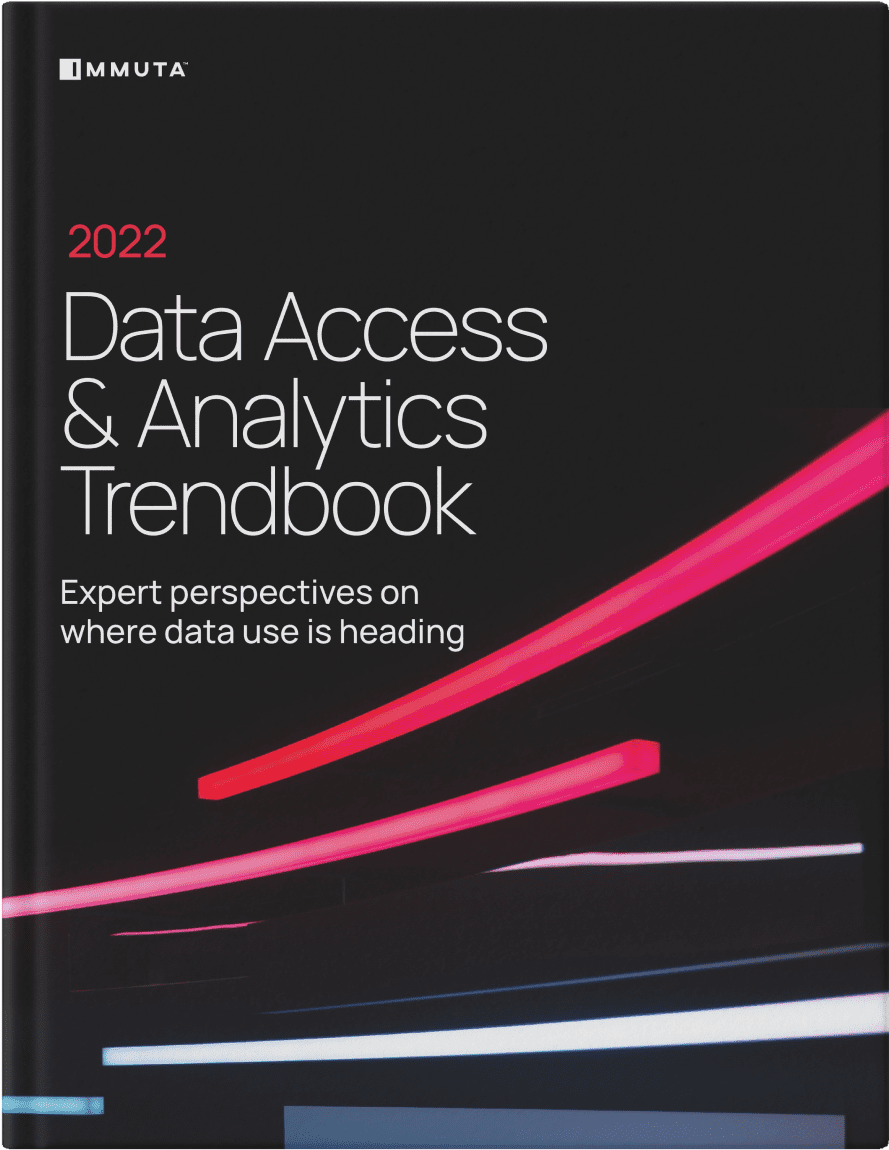The explosion of organizations that collect and store data for analytics use has led to an inevitable rise in data breaches and leaks, in which attackers or otherwise unauthorized users are able to gain access to sensitive data. It makes sense, then, that individuals and organizations alike are more cognizant – and often highly skeptical – of how their data is being collected, shared, and used.
To remain competitive into the future, organizations have a responsibility to demonstrate trustworthiness and transparency in their data practices. Otherwise, they risk losing customers’ confidence and support – and damaging their reputation along the way.
Data anonymization is one of the single best methods to avoid these outcomes and ensure data remains private and secure. But with so many different approaches to data anonymization, it can be difficult to know where to start. In this blog, we’ll go into detail about the top data anonymization techniques and how to pick the right ones for your data needs.
What Is Data Anonymization?
Before you can make an informed decision about data masking techniques and solutions, it’s essential to understand – what is data anonymization?
Data anonymization involves removing or encrypting sensitive data, including personally identifiable information (PII), protected health information (PHI), and other non-personal commercial sensitive data such as revenue or IP, from a data set. Its intent is to protect data subjects’ privacy and confidentiality, while still allowing data to be retained and used.
Data anonymization reduces the risk of data being leaked or re-identified, and is a trusted way to achieve compliance with major data compliance laws and regulations like HIPAA and the EU’s GDPR. But as much as data anonymization serves as a preventative measure, it is also a form of enablement, allowing data to be shared easily and securely for analysis.
What Are the Most Common Data Anonymization Techniques?
Several different techniques exist to anonymize sensitive data:
Data Masking
Data masking is perhaps the most well-known method of data anonymization. It is the process of hiding or altering values in a data set so that the data is still accessible, but the original values cannot be re-engineered. Masking replaces original information with artificial data that is still highly convincing, yet bears no connection to the true values.
There are two primary types of data masking: static, which involves making a copy of a data set and masking the data in the copied version; and dynamic, which masks data on the fly as it is queried and/or transferred. Deterministic and real-time masking are also options, albeit lesser known and used.
In practice, a few of the most common data masking techniques include k-anonymization, encryption, and differential privacy.
[Read More] How to Implement Databricks Data Masking Across Platforms
Data Pseudonymization
Data pseudonymization generally refers to the process of masking direct identifiers in a data set information by replacing them with “pseudonyms,” or artificial identifiers. For example, data may be considered pseudonymized if individuals’ email addresses are replaced with numbers – the original, directly identifying information is removed, but each number is specific to a certain email address and can therefore be put back together by anyone with the right knowledge.
The key differentiator between pseudonymization and anonymization is the treatment of indirect identifiers: pseudonymization does not consider indirect identifiers and is meant to be reversible, while anonymization does. While the GDPR encourages pseudonymization as a means of reducing risk, pseudonymized data is not exempt from its jurisdiction in the same way anonymized data is. This is because the GDPR’s Recital 26 states that “all means reasonably likely to be used…to identify the natural person directly or indirectly” should be considered when determining re-identification risk. Since pseudonymization does not take indirect identifiers into account, it alone is not a sufficient way to anonymize data.
Data Generalization
Data generalization essentially “zooms out” on a data set, creating a broader view of its contents that reduces the ability to pick out individual characteristics and attributes. This often is accomplished by mapping several different values to a single value or range, such as combining specific ages into age ranges. Data generalization is best suited for data sets that are large enough to ensure the data is sufficiently ambiguous without losing its utility.
There are two primary approaches to data generalization. Automated generalization algorithmically calculates the minimum amount of distortion needed to strike a balance between privacy and accuracy. k-Anonymization is a common type of automated generalization. Declarative generalization, on the other hand, requires manually determining how much distortion is needed to reach the same objective. It can be a good starting point, but is less objective than the automated approach.
2022 Data Access & Analytics Trendbook
Expert perspectives on where data use is heading
Download Ebook
Data Perturbation
Data perturbation deliberately randomizes data elements to add vagueness to a data set in a predictable and restorable way, without impacting accuracy for analytics. This can be accomplished by introducing noise to sensitive numerical values, or by randomly altering categorical variables.
Data perturbation is often used to protect sensitive electronic data like electronic health records (EHR). For example, in a survey that asks participants to report recreational drug use, data perturbation allows the number of artificial “yes” responses to be correctly estimated, so that survey takers can answer truthfully without the ability to be implicated as having answered “yes.”
Data Swapping
Rearranging data in a data set such that attribute values no longer correspond to the original data is known as data swapping. Also referred to as data shuffling or data permutation, this data anonymization technique may take an attribute from Row 1 and swap it with an attribute from Row 78 of the same column.
Data swapping is particularly useful in machine learning (ML) because it helps train models using testing batches that are representative of the total data set. Just as shuffling a deck of cards helps reduce the likelihood of repeatedly drawing the same hand, swapping or shuffling data aids in reducing biases from models and improving performance.
Synthetic Data
Synthetic data is machine-generated, but closely mirrors actual sensitive data. Algorithms are frequently used to create this artificial data, which is often used for model training and validation in ML and AI. Since modeling typically requires sizable data sets, synthetic data provides an avenue for achieving objectives without having to collect large volumes of potentially sensitive personal information. According to Gartner, 60% of data used for AI development and analytics projects will be synthetic within the next two years.
Which Data Anonymization Techniques Do I Need?
Each organization’s data needs and use cases are different – and as we saw, more than one data anonymization technique may be required in order to meet regulatory compliance standards. Therefore, when it comes to prioritizing which methods are right for your data stack, there’s no such thing as one-size-fits-all.
The best approach is to:
- Assess your data – How much and what type of sensitive data are you collecting, storing, and using?
- Prioritize use cases – How are you using data, and how might those use cases evolve in the future?
- Understand legal requirements – What internal and external rules and regulations are you currently subject to, and what might be added over the next several years?
- Evaluate your tech stack – What data platforms do you currently use, and what types of data anonymization capabilities are available on those platforms?
- Look to the future – As your organization grows, how might your data anonymization needs increase? Are you able to scale anonymization tools to achieve consistent, reliable data security?
Ad hoc or manual approaches to data anonymization may work for small organizations with few data users and data sources. But many data teams find that data needs often outpace business growth – leaving them to play catch-up.
The Immuta Data Security Platform helps solve this problem by delivering a suite of highly scalable and advanced data anonymization techniques that are automatically enforced across even the most complex data environments. With Immuta’s dynamic data masking, organizations can implement privacy enhancing technologies (PETs) like randomized response and k-anonymization, to secure even the most sensitive data, regardless of where it lives. Automating data discovery, security, and monitoring ensures that users have access to the right data at the right time – so long as they have the rights.
See how easy it is to apply data anonymization techniques by creating, enforcing, and monitoring plain language policies with our free self-guided walkthrough demo.
Try it yourself.
To see how easy it is to start building policies with Immuta, check out our self-guided demo.
Self-Guided Demo